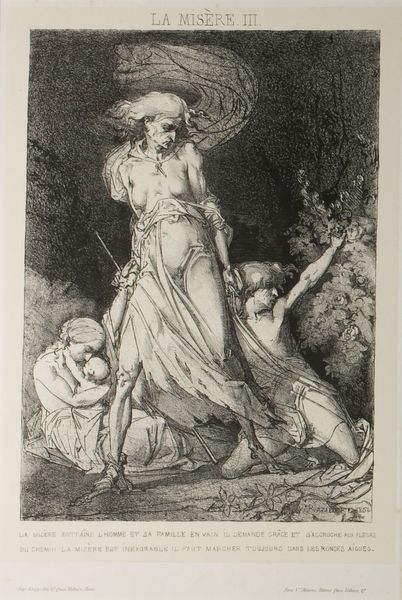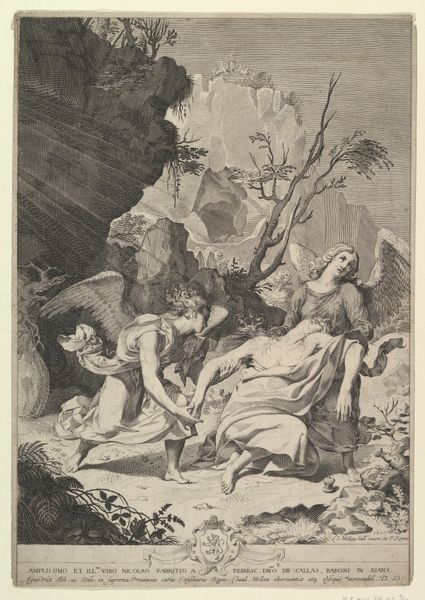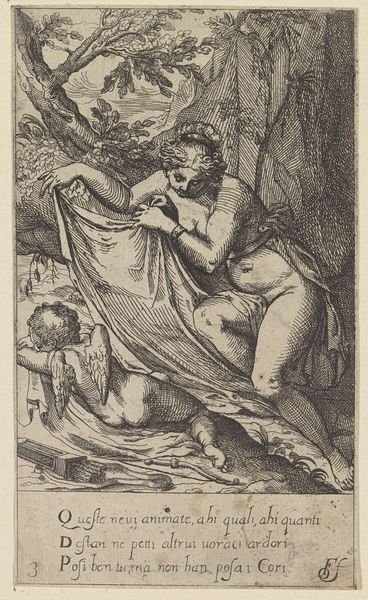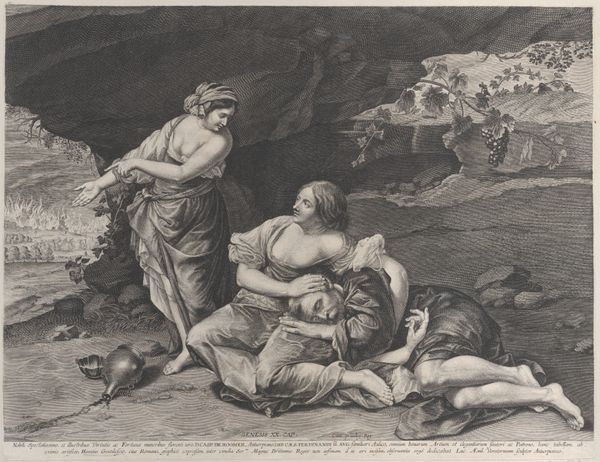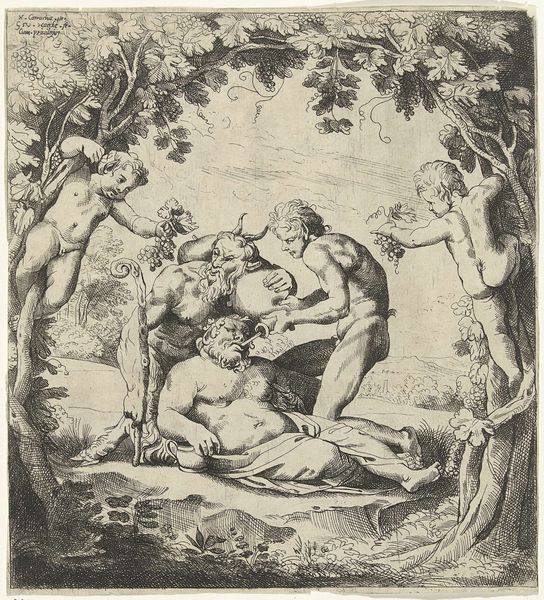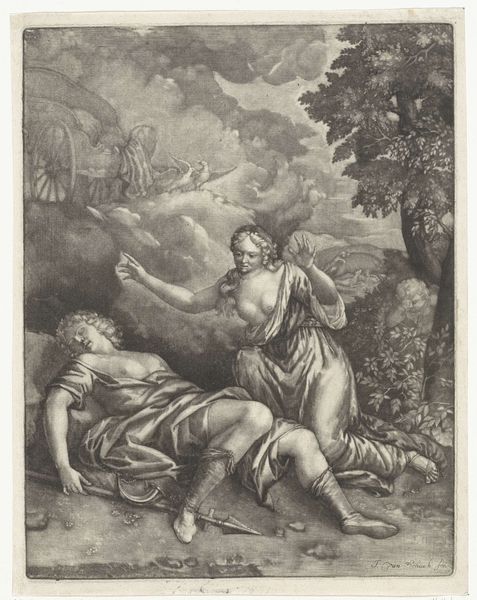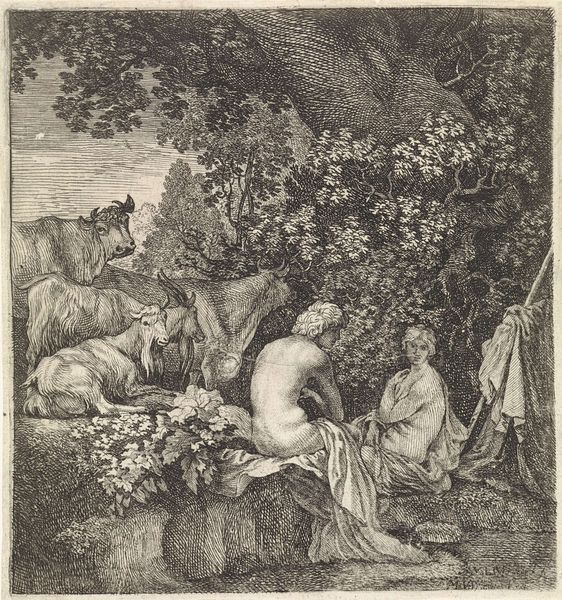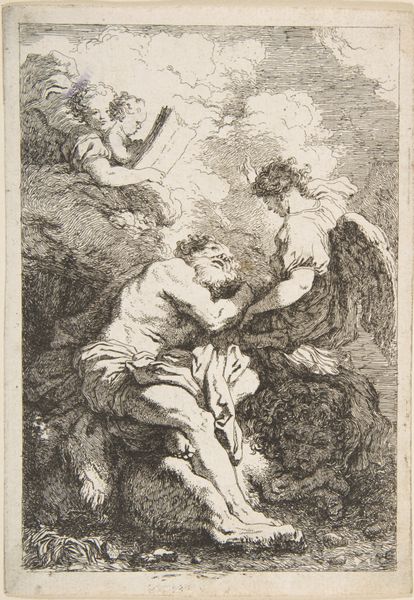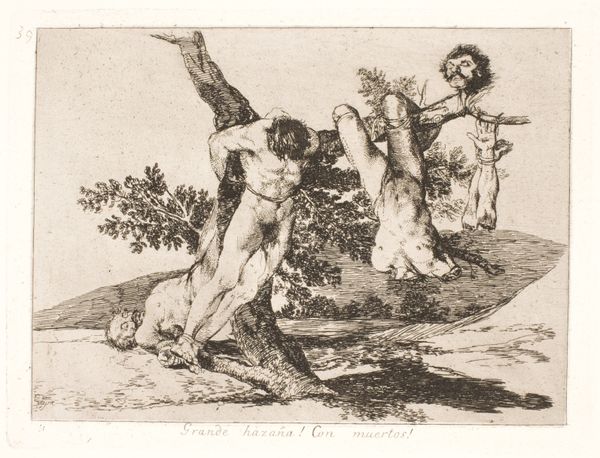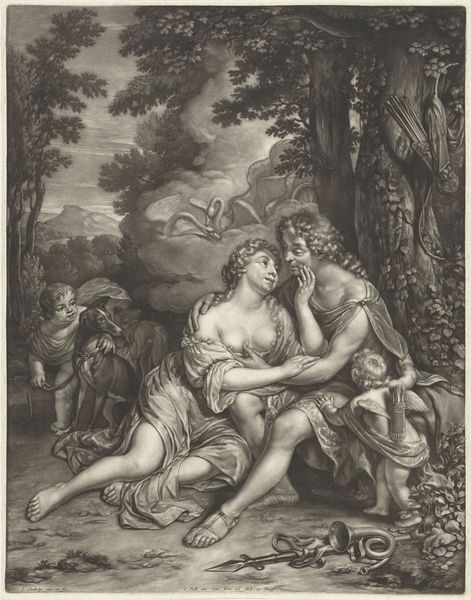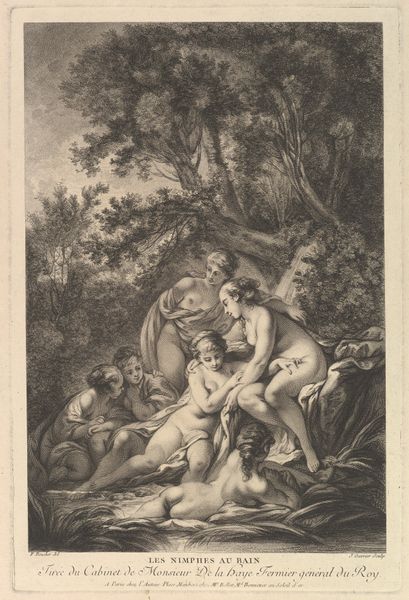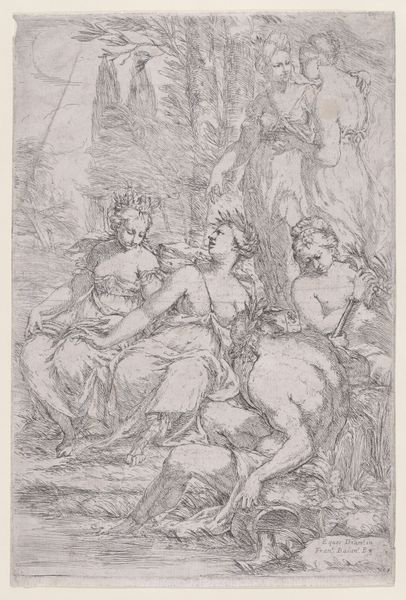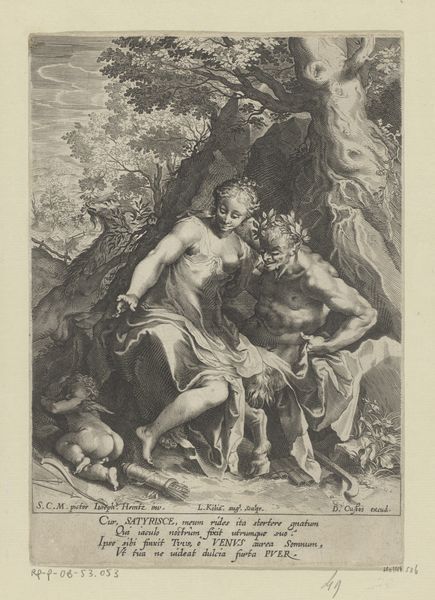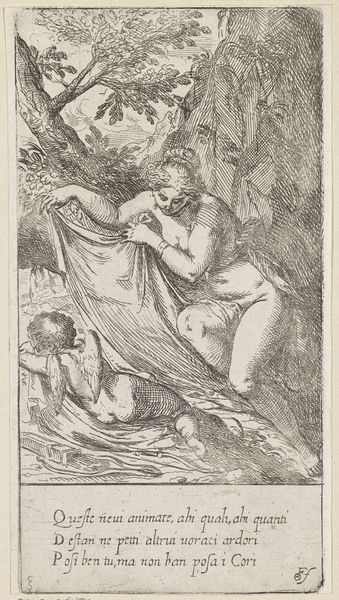
print, etching
#
allegory
#
baroque
# print
#
etching
#
landscape
#
figuration
#
nude
Dimensions: height 159 mm, width 153 mm
Copyright: Rijks Museum: Open Domain
Editor: We're looking at "Vrouw met drie kinderen" (Woman with Three Children) by Moyses van Wtenbrouck, an etching dating somewhere between 1600 and 1660. The textures achieved solely with line are amazing, so detailed. What stands out to you about this print? Curator: It’s compelling to consider the etching process itself. Think about the labor involved, the physical act of repeatedly drawing lines into a plate, in order to mass-produce images like this one. How might this availability have altered the consumption of art? Editor: That’s interesting. I hadn’t thought about the impact of printmaking beyond making images more widely available. Curator: Precisely! We see what appears to be an allegory, a symbolic depiction of motherhood perhaps, readily disseminated through print. It transforms the reception of this scene. Consider the shift in power: from a unique object owned by the elite, to an accessible item engaging a potentially wider audience. What's gained, what's lost in that transition? Editor: So, you are focusing on the shift from singular art to easily reproducible artwork... How does that affect what the artwork represents? Curator: This reproductive technology creates a democratization of imagery. But what labor went into this piece, and who was that labor for? It creates a kind of friction; beauty and allegory offered through a medium rooted in production. Does this complicate how we view its artistic merit? Editor: I see what you mean. It forces us to question both the intention of the artist and also consider all those in the background involved in the process and distribution, and not just the artistry in the image. Curator: Absolutely! By interrogating the materiality and production, we challenge assumptions about value and accessibility within the art world. Editor: Thanks, that perspective has made me look at printmaking, and art distribution of imagery, in a different light. Curator: It’s about seeing the object as the result of its historical and material conditions, not just its aesthetic qualities.
Comments
No comments
Be the first to comment and join the conversation on the ultimate creative platform.
